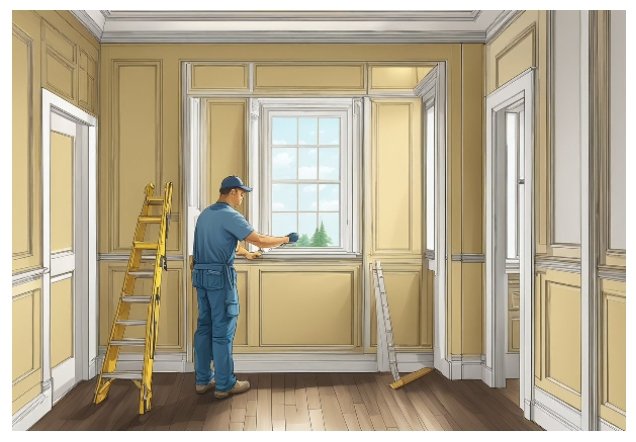Finish carpentry is a specialized field of carpentry that involves the installation of decorative woodwork and trim, such as crown molding, baseboards, and wainscoting. Finish carpenters are skilled craftsmen who take pride in their work and pay close attention to detail. They work with a variety of tools and materials to create beautiful and functional spaces.

Finish carpentry is an important aspect of any construction or renovation project, as it adds the finishing touches that give a space its character and charm. Whether it’s a simple baseboard or an intricate coffered ceiling, finish carpentry can transform an ordinary room into a work of art. It requires a keen eye for design and a steady hand to ensure that each piece is installed correctly and looks its best.
If you’re considering a career in carpentry, finish carpentry may be a good option for you. It requires a combination of technical skill and artistic flair, and can be a rewarding and fulfilling career choice. With the demand for skilled tradespeople on the rise, there has never been a better time to explore the world of finish carpentry.
Fundamentals of Finish Carpentry
Tools and Materials
Finish carpentry requires a specific set of tools and materials to achieve a polished and professional look. Some essential tools include a miter saw, finish nailer, brad nailer, coping saw, and various hand tools such as chisels, hammers, and screwdrivers. Materials such as trim, molding, and baseboards are also necessary to complete the job. It is important to ensure that all tools and materials are of high quality to achieve the best results.
Measuring and Cutting
Accurate measuring and cutting are crucial in finish carpentry. A slight error in measurement can cause a piece of trim or molding to not fit properly, resulting in an unprofessional finish. It is recommended to measure twice and cut once to avoid wasting materials. A miter saw is an essential tool for making precise cuts at different angles. Coping saws are also useful for cutting intricate shapes and curves.
Safety Protocols
Finish carpentry involves the use of power tools and sharp objects, making safety protocols essential. It is important to wear appropriate safety gear such as safety glasses, earplugs, and gloves when using power tools. It is also important to keep the workspace clean and organized to avoid tripping hazards. Before using any tool, make sure to read the instruction manual and follow all safety guidelines.
Remember, finish carpentry requires patience, attention to detail, and precision. With the right tools, materials, and safety protocols, anyone can achieve a professional finish.
Advanced Techniques
Custom Installations
When it comes to custom installations, finish carpentry requires a high level of skill and attention to detail. This involves creating unique pieces that fit perfectly into a specific space, such as built-in bookshelves or custom cabinetry. The carpenter must take precise measurements and carefully plan out the design to ensure a seamless fit.
To achieve this, finish carpenters often use specialized tools such as a miter saw, table saw, and jigsaw. They may also use templates and jigs to ensure consistent cuts and angles. In addition, they may incorporate decorative elements such as moldings, trim, and other embellishments to enhance the overall look of the installation.
Precision Joinery
Precision joinery is another advanced technique used in finish carpentry. This involves creating seamless joints between two or more pieces of wood, such as in the case of a door frame or window casing.
Finish carpenters use a variety of techniques to achieve precision joinery, including mortise and tenon joints, dovetail joints, and biscuit joints. They may also use adhesives and clamps to ensure a tight fit.
To achieve the highest level of precision, finish carpenters often use specialized measuring tools such as a caliper or micrometer. This allows them to measure the exact thickness of the wood and ensure a perfect fit.
Aesthetic Enhancements
In addition to custom installations and precision joinery, finish carpenters often incorporate aesthetic enhancements into their work. This can include adding decorative elements such as moldings, trim, and other embellishments to enhance the overall look of the finished product.
Finish carpenters may also use a variety of finishes to achieve a desired look, such as staining or painting the wood. They may also use techniques such as distressing or antiquing to create a specific aesthetic.
Overall, advanced finish carpentry techniques require a high level of skill and attention to detail. By incorporating custom installations, precision joinery, and aesthetic enhancements, finish carpenters are able to create beautiful and functional pieces that enhance the overall look and feel of a space.